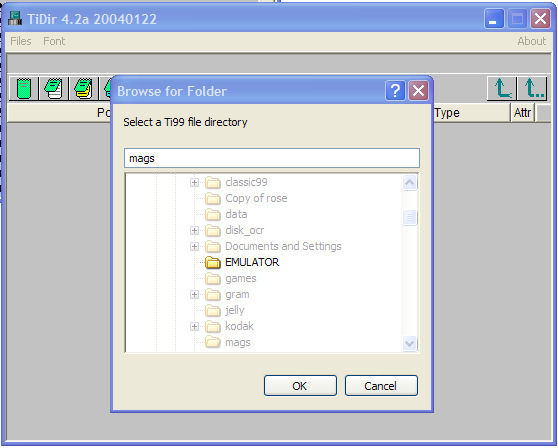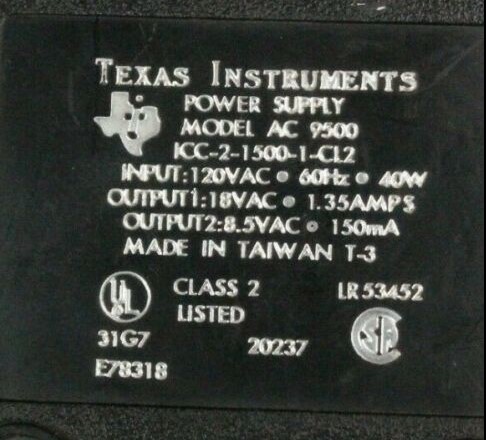
Of course, the sheer speed of microprocessors was so blindingly fast by the mid-1980's that it didn't matter about all the time needed to swap data in and out of on-board registers. That was why the TI-99/4A ran acceptably fast enough, even with a horrendously slow clock rate. This ham-strings their operation and makes them much, much slower. Only Texas Instruments and DEC released microcomputers like this.Īll other micros used microprocessors, which have to move data from linear memory, to on-board registers, and then back out. This architecture is "classic" computer architecture. All addressed in the same manner as linear memory. If you learned to program it in Assembly, as I did, it had a "floating workspace" which coexisted in the single linear memory space, which along with programs and data, also used memory locations for I/O. One comment though: The TI-99/4A was one of only two REAL COMPUTERS to be released in the 1970's-1980's microcomputer boom. Still have a number of them gathering dust in the garage. Later on I bought a TI-99/4A and I was hooked.

Although I use a Windows-based TI-59 emulator when I need a quick calculation or two. ahh, THAT was a calculator! I used one in my college years. Too much to really detail, you just have to see for yourself. Games abound including a monthly game contest where other members pony up TI-related prizes to the winners, loads of programming options like gcc, TurboForth, file-based fbForth, many options for assembly, a fantastic Extended BASIC compiler. Competent emulation like Classic99 and MAME can provide your gaming fix without the real machine as well as a super-fast development platform††. A number of folks in the AtariAge forum‡ have Lotharek floppy emulators in the full-size PEB, or use the scaled-down nanoPEB which puts 32k, floppy emulation with a CF card, and an RS-232 interface on a small side-car module. There are a lot more expansions enabling better programming and gaming, and better portability, really showing the 99/4A as a capable peer of the better-known systems of its era, like the Commodore 64 and Atari 8-bits. It gives the system SVGA output, new screen modes, multi-color sprites, has an option to eliminate the five-sprite-per-line limitation, and provides a fast implementation of the 9900 in the GPU (yes, the 99/4A can now be a multi-processor computer.) One big development for the 99/4A which is cross-platform is Matthew's F18A, an FPGA replacement for the TMS-9918A, variants of which wound up in numerous other systems, like the MSX, ColecoVision, and more†. your classic solid 8x8 circle/disc: 3C7EFFFFFFFF7E3CĮventually I upgraded to an Amiga A500.

I learned hex as a result of memorising the bit patterns associated with the strings necessary to define 8x8 UDG blocks, e.g. Without that, printing strings to the screen was a rather tortuous affair involving GOSUB routines and FOR NEXT loops calling HCHAR() (don't ask).Īnd then there were the UDG's (User Defined Graphics for people who didn't grow up in the 80's - you might also need to look up "sprite" :) ). Extended BASIC gave us advanced features such as sprites and. I also had a lot of fun with the speech synthesizer add-on module and a graphics tablet (!!) whilst the Extended BASIC cartridge provided a decent place to learn programming, compared to the rather idiosyncratic BASIC that was on-board otherwise.Į.g. But those cartridges were great, and could add capabilities to the base machine to enable more advanced games (I seem to remember Parsec did something like that).

The '99 could load from tape as well, and some games still required that (Scott Adam's Adventures being a prime example). Cartridges were great for a quick bit of gaming at a time when for someone with a Speccy or a 64, you had to factor in the loading time, from tape.
Classic99 ti emulator mac upgrade#
This was my upgrade from a ZX81.Īn amazing bit of kit really, for the time and thanks to it's market failure a lot of add-ons could be picked up for pocket money. A lot of my extended family worked at TI in Bedford (UK) and when they EOL'd the '99 staff were able to pick one up for chump change, so we got one through an uncle still working there.


 0 kommentar(er)
0 kommentar(er)
